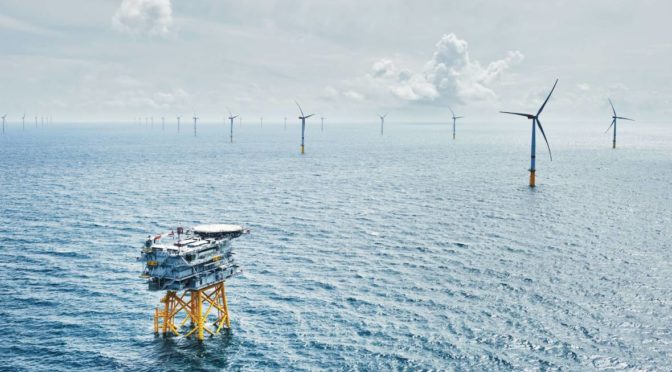The American Wind Energy Association (AWEA) announced the hire of Laura Smith Morton this week to lead policy and regulatory efforts for the U.S. wind industry’s rapidly emerging offshore sector. In her new role as Senior Director, Policy and Regulatory Affairs, Offshore Wind, Morton takes the helm of AWEA’s offshore wind program during a crucial growth period—as the nascent U.S. industry prepares to build its first large-scale projects off the Eastern seaboard. July 8th was Morton’s first day.
“It’s immensely gratifying to be back working on offshore wind issues.
As this new American energy industry scales up, we must strike the right
balance with policies that encourage development, job creation, and the
revitalization of coastal infrastructure while also engaging with other
ocean users to ensure all can prosper,” said Laura Smith Morton, AWEA’s
new Senior Director, Policy and Regulatory Affairs. “I’m ready to roll
up my sleeves and get to work so this industry can put more steel in the
water.”
Morton has more than 10 years of experience in offshore wind policy
and regulatory issues, both as an attorney and through senior roles at
the Department of Energy (DOE), Council on Environmental Quality, and
the National Oceanic and Atmospheric Administration. She contributed to
the original National Offshore Wind Strategy published by the DOE and
Department of the Interior, which charted a course to build the U.S.
offshore wind industry, and led multiple interagency teams charged with
creating efficiencies in the permitting process for clean energy
projects. Most recently, Morton served as a consultant to companies and
non-profit organizations, including the National Audubon Society and the
American Sustainable Business Council, on renewable energy,
environment, and water resources issues.
“We’re thrilled to have Laura on board as we help shape the
industry’s next chapter,” said Tom Vinson, Vice President, Policy and
Regulatory Affairs, AWEA. “Her proven experience securing progress
through federal bureaucracies and strategic expertise overcoming federal
and state permitting challenges will bolster our efforts to realize a
thriving U.S. offshore wind sector and a strong domestic supply chain.”
Morton will lead AWEA efforts in close coordination with the
Association’s member companies to resolve permitting and regulatory
challenges impacting offshore wind projects in development and
facilities in operation. Key issues in Morton’s portfolio include
offshore wind leasing and the Bureau of Ocean Energy Management
regulatory process, multiple-use compatibility with other ocean users,
environmental impacts, and others.
Currently, the 30-megawatt Block Island Wind Farm stands alone as
the only operating U.S. offshore wind farm, but that’s about to change.
The second U.S. offshore wind project just began construction in federal
waters near Virginia and project developers anticipate a total of six
projects with a combined capacity of 2,010 megawatts to be operational
by 2023.
Harnessing U.S. offshore wind resources at scale will deliver vast
amounts of reliable energy to America’s biggest population centers,
create tens of thousands of well-paying American jobs, revitalize ports
and coastal communities, and improve national security. There’s also a
huge opportunity for U.S. supply chain businesses, including those with
experience in offshore oil and gas, to construct and service offshore
wind farms. According to the University of Delaware’s Special Initiative
on Offshore Wind, building 18.6 gigawatts of offshore wind capacity by
2030 would create a nearly $70 billion opportunity for businesses in the
industry supply chain.


